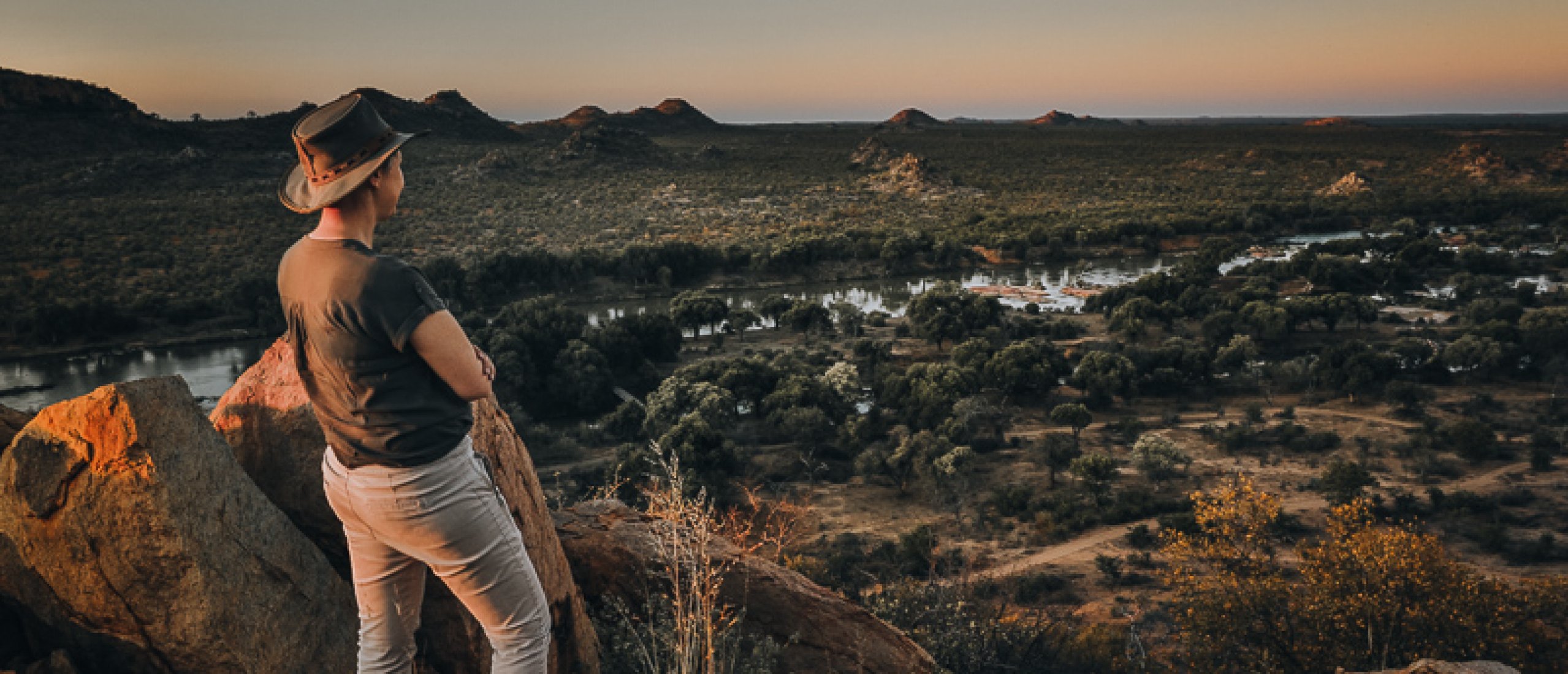
Searching for practical tips about what to wear on safari in Africa for a safari outfit that is both fashionable and functional? Embarking on a safari adventure promises thrilling encounters with wildlife and breathtaking landscapes. As you plan for this unforgettable journey into the African wilderness, one crucial aspect to consider is your attire. Your safari outfit should strike a balance between comfort, functionality, and style, allowing you to fully immerse yourself in the wild wonders of the safari world while remaining practical for the natural environment you'll be exploring. In this comprehensive safari clothing guide you will learn more about the safari dress code and clothing essentials.
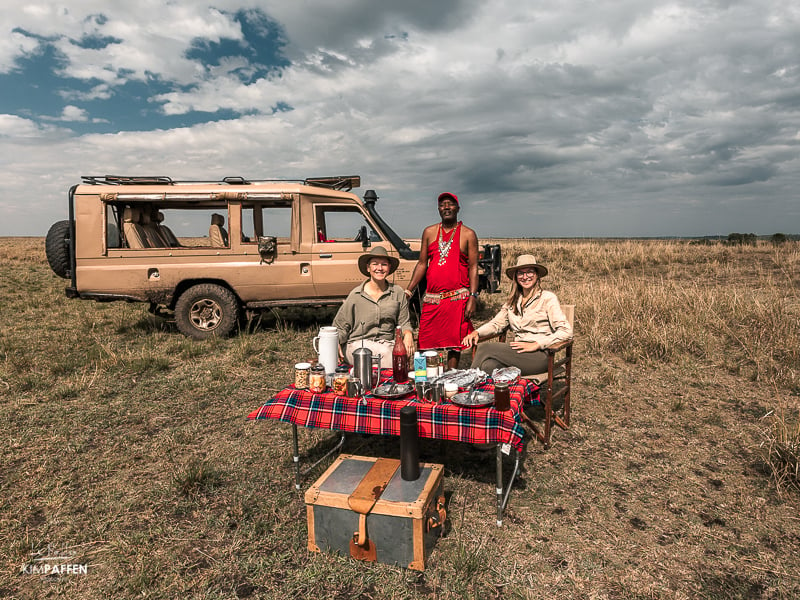
So what is a good safari outfit? A good outfit for safari helps you deal with Africa's environmental conditions like heat, moisture, dust, and insects. It’s important that they offer sun and anti-insect protection, dry quickly, and don’t wrinkle fast. There is a safari clothing rule of thumb that says: ‘Dress in layers for all activities & wear shades of the African bush’.
Your clothing choices and safari wardrobe can greatly impact your comfort and overall enjoyment during your safari. Here are 8 essential safari clothing tips for crafting your perfect neutral safari outfits:
1. Neutral Earth Colors for your Safari Outfit
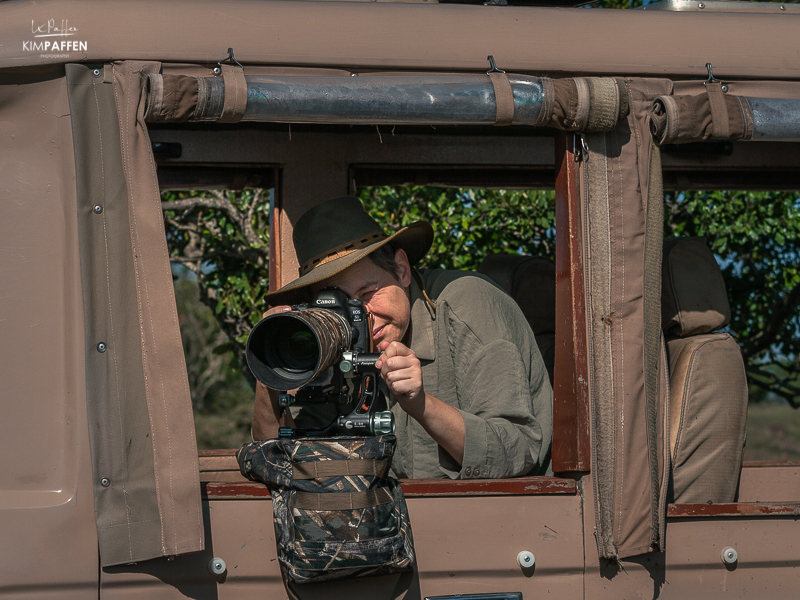
Neutral-colored tones like khaki, beige, brown, and olive green work best to help you blend in with the natural surroundings of the African wilderness and are less likely to attract insects. Another tip to keep insects away on safari: avoid applying strong smelling perfume. Instead, use essential oils with citronella or lavender to repel insects like mosquitoes. Wearing a safari outfit in earth tones also demonstrates respect for the natural environment and its wildlife. It aligns with the principles of responsible and ethical wildlife viewing.
Dark clothes for safari like black and blue attract heat, biting tsetse flies, and other insects, so these colors are better not to wear on safari. Also, avoid bright colors and neon colors that may startle or attract animals; especially when you go on a walking safari. Although white colors often look nice and stylish on the safari photos across the web, I wouldn't recommend wearing white clothes on safari drives as the roads can be extremely dusty, especially if you're allowed to go off-road in for example the conservancies around the Maasai Mara.
In summary, what colors to wear on safari and what not to wear on safari:
- DO wear on safari: Khaki, brown, sand, beige and green hues are the best colors to wear on safari
- DON'T wear on safari: bright colors, pale and neon hues, black and blue colors, busy patterns and military camouflage clothing (in African countries, camouflage attire is only worn by the rangers and military).
2. Wear Layers on Safari for Protection from the Cold
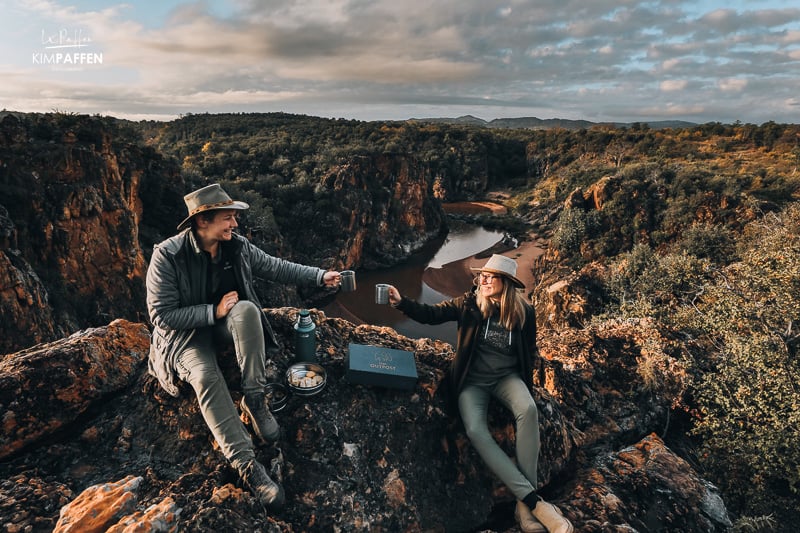
Layer Up! On safari in Africa, weather in certain seasons can change quickly and temperatures can vary significantly, especially during early morning and late afternoon game drives. In the mornings, it can be cold and windy, while in the afternoon it can still be very hot. Sometimes, Mother Nature may surprise you with a heavy rain shower; all part of your Africa safari adventure. That's why it's a good idea to wear layers when you go on a game drive or a walking safari. Layering allows you to adjust your clothing accordingly and stay comfortable in changing weather conditions.
Now, what does wearing layers mean? In the morning, when you start your game drive before sunrise, it can be chilly. So start by wearing for example a lightweight khaki short-sleeve shirt, then a beige long-sleeved blouse, and an olive-green warm fleece jacket to keep you warm in the mornings and on exciting night drives to spot nocturnal animals. When it gets hotter during the day, you can take some layers off. Simple as that. For rainy days, it's handy to have a rainproof jacket, for example a soft shell or poncho that you can easily put in your daypack.
3. Wear Breathable Fabrics on Safari
Safari destinations often have warm climates, so prioritize lightweight and breathable fabrics like cotton and linen to stay cool and comfortable throughout the day.
You can wear lightweight pants, shorts or long outdoor pants that can change into shorts (zip-offs). Choose long-sleeve neutral colored blouses made of light fabric. These best clothes for safari not only keep you cool but also protect you from bugs and the sun. If it gets hotter during the day, you can roll up your sleeves or change your convertible pants into shorts.
4. Consider Safari Clothes that offer Protection
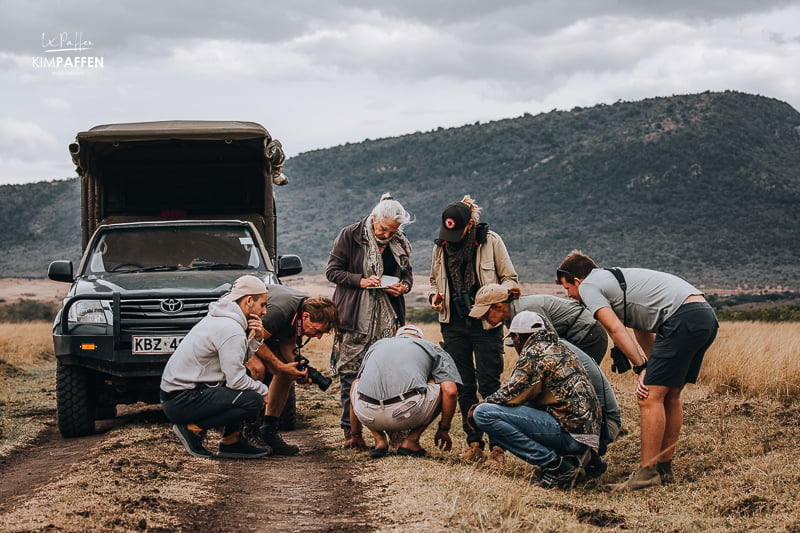
Safaris means exposure to the sun, insects, and potentially (lots of) dust. Long-sleeve shirts and pants will protect yourself from the sun an other elements like dust, wind, rain, and insects. Opt for outdoor clothing with built-in UV protection or safari clothing with insect-repellent for added defense and to minimize pesky insect bites.
Also, don't forget to bring a hat and a scarf. A wide-brimmed safari hat and safari sunglasses protect your face from the sun, and a scarf keeps you warm when it's chilly or it can protect you from rain or dust. This safari clothing with sun protection and protection against other natural elements will help you have a better time on your safari.
other safari gear to bring along on safari game drives or walking safaris is rain gear. Even during dry seasons, unexpected rain showers can happen. Packing a lightweight, foldable raincoat or poncho can keep you dry and comfortable. So, be prepared for all kinds of conditions on your safari adventure.
5. Pack Lightweight and Versatile Safari Clothing
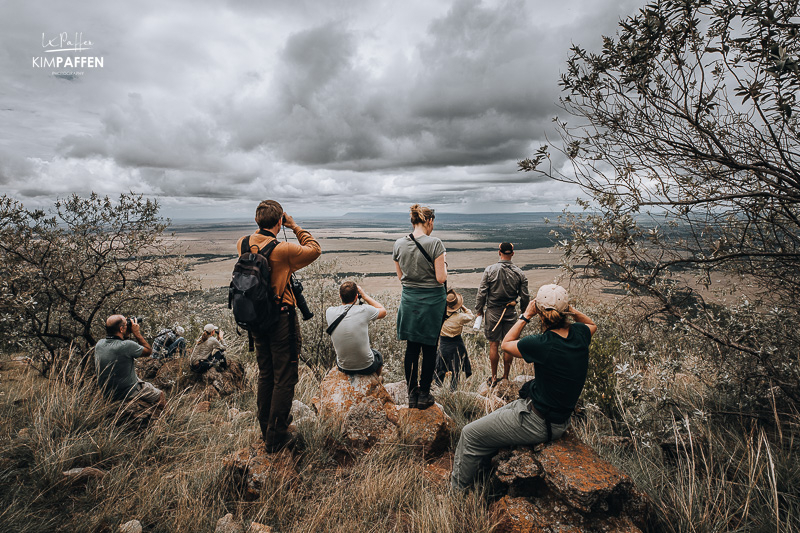
On safari, it’s smart to pack efficiently because you often travel around. Minimize your luggage by selecting versatile pieces that can be mixed and matched. Pack items that can easily be washed and dried overnight.
If you choose lightweight clothes, you can travel with a lighter bag. This is especially important when you travel around with charter flights, as most small planes used for moving between safari destinations have rules about how heavy your bags can be (often max. 10kg). Many African lodges offer laundry services, so you don't need to pack too much.
One clever trick is to bring safari clothing for hot weather and safari clothing for cold weather that can be mixed and matched and used as layers. Earth tones, like khaki and green, are not only great for blending in with the surroundings, but they also make it easier to put together your safari outfit.
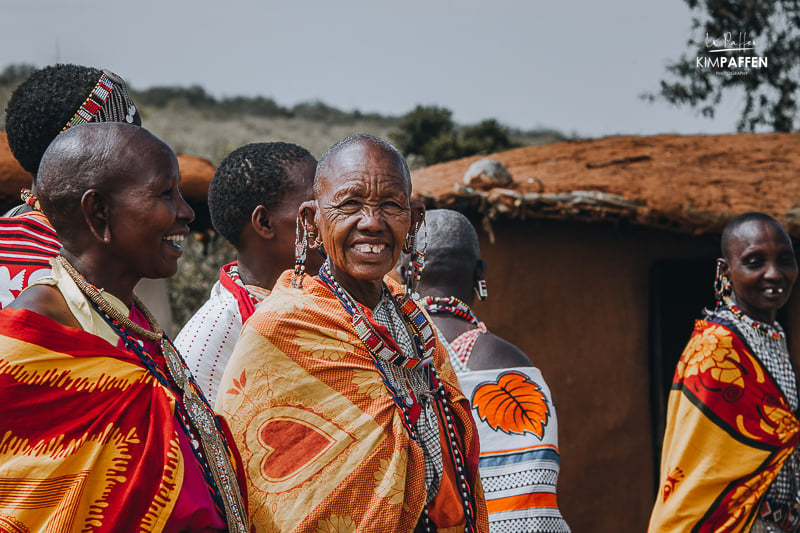
Moreover, leave valuable jewelry at home. Minimal jewelry is the way to go. It does not only enhance your comfort but also ensures your safety. Instead, by some colorful beadwork from the ladies that make beautifully handmade jewelry, like bracelets.
6. Wear Comfortable Footwear on Safari
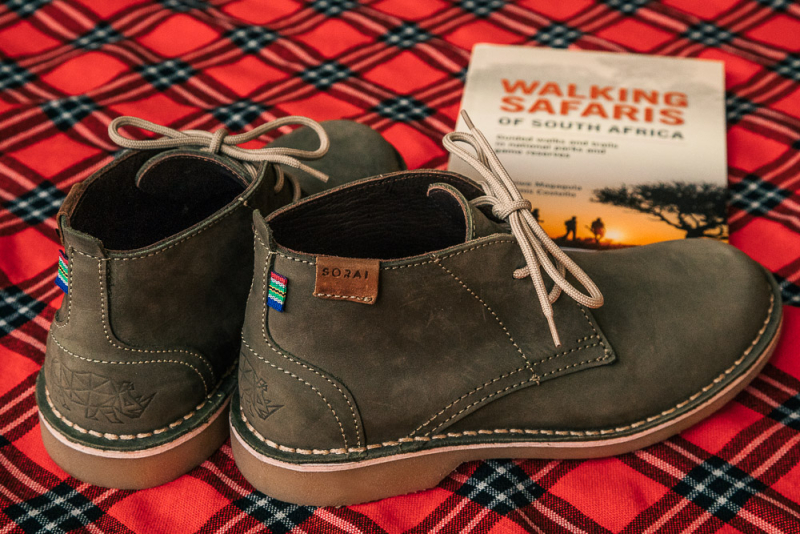
Make sure to bring along a comfortable pair of shoes to complete your safari outfit. Opt for sturdy, closed-toe shoes, boots, or vellies with good traction. You'll likely be walking on uneven terrain, so prioritize comfort and support to avoid discomfort and potential injuries.
The type of closed shoes you need depends on the type of safari and activities on your safari trip. For example, if you go on walking safaris, or if your safari involves gorilla trekking through muddy forests or hiking dusty terrain, it’s advisable to bring high-quality safari boots or hiking shoes with good grip worn with hiking socks and impenetrable soles, which can be useful to protect you from sharp objects like snares or thorns and from reptiles like snakes.
Some even wear gaiters for better protection from snake bites or ants. Depending on the terrain, I wear short olive-colored gaiters when encountering wildlife on foot in East Africa. For Gorilla Trekking in Uganda and Rwanda, I wear higher gaiters as you trek through dense vegetation than can be thorny and slippery with biting ants along the way.
If you're mainly going on a game drive in a vehicle, basic stable shoes, like lightweight trail shoes, are fine. If you're in an area with lots of bity insects and reptiles, it's wise to consider higher-rise hiking boots for added protection on safari. I prefer closed shoes on walks because of the insects and thorns but I'm also someone who loves to wear slippers on game drives. If you decide to wear sandals or slippers, please make sure to apply sunscreen on your feet.
One of my preferred safari shoes choices is the authentic South African Veldskoen boot. These shoes are handcrafted, comfortable, durable, and have a stylish touch. Many local field guides in Africa wear these boots too.
7. Respect Cultural Sensitivities
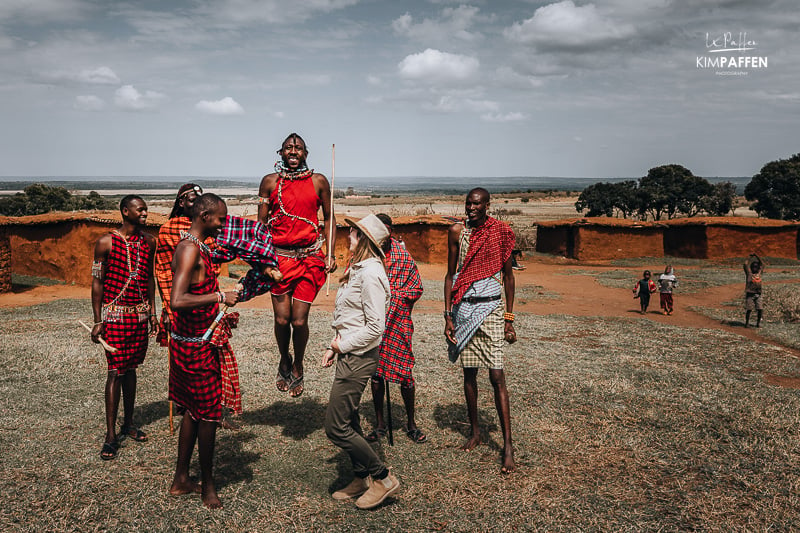
Respect local customs and traditions by dressing modestly, particularly if you'll be visiting communities or cultural sites during your safari. In (rural) communities, revealing clothing, such as short shorts or low-cut tops, can be considered disrespectful or offensive. If your safari includes visits to local communities, opting for clothing that covers your shoulders, arms, and knees is advisable.
If you have the opportunity to participate in local festivals or ceremonies, wearing clothing that aligns with the traditional attire of the community can be a sign of respect and can enhance your cultural experience.
8. Check the Camp or Lodge Dress Code
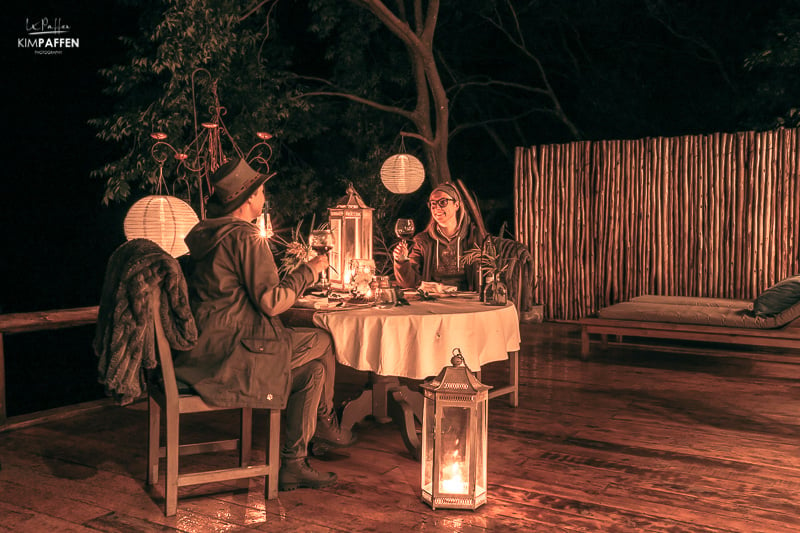
Most safari lodges and camps have a casual safari-style dress code. In that case, formal (evening) wear is not necessary to pack. If you prefer, you can change your safari outfit for formal evening wear, but in reality, most people go straight to dinner after arriving from the evening game drive.
On my first African safari, I used to go back to my room to take a shower and change my safari clothes. But I quickly learned that most people prefer to stay by the fire after the game drive while sipping on a glass of wine or cold beer as an after sundowner. From gazing into the fire and talking about your sightings with other guests, you go straight to dinner. Most safari days don't end extremely late as you have early morning game drives.
Some lodges or camps may have specific dress codes for certain activities or dining areas, so it is advisable to check the clothing guidelines of your lodge or camp in advance.
Frequently Asked Questions (FAQs) about what to wear on Safari
Can I Wear Shorts on Safari?
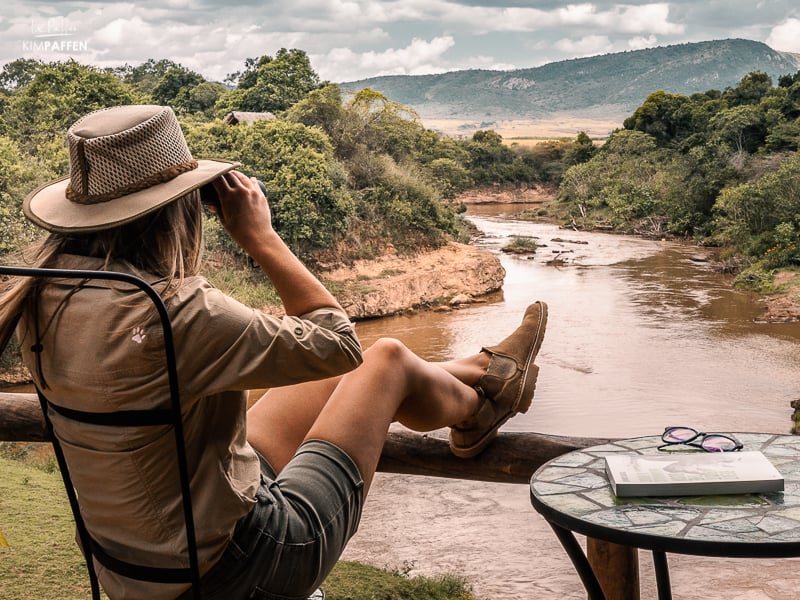
While shorts can be comfortable, long trousers are recommended for better protection against insects, thorny vegetation, and the sun, especially on safari walks.
Should I Wear Camouflage Clothing?
It's best to avoid wearing camouflage clothing as safari attire, as it's often associated with military or hunting activities, which may not be appropriate in wildlife conservation areas.
Are Hats Necessary on Safari?
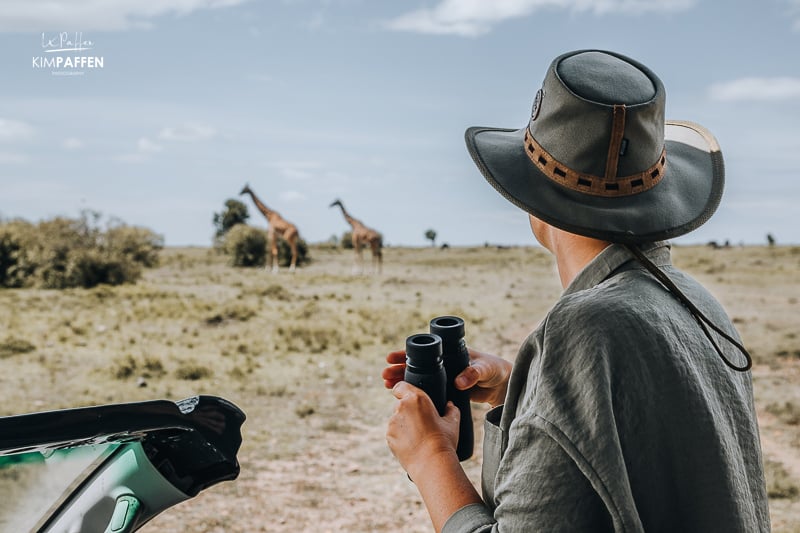
Yes, sunhats are essential for sun protection. Since most African safari destinations are located around the Equator, the sun is fierce! I therefore recommend wide-brimmed styles to shield your face and neck from the sun's rays. Additionally, I always recommend applying sunblock between 30 and 50 spf.
What is a stylish Safari Hat?
Rogue Hats are a popular choice to wear on safari. These safari hats are not only stylish, but also practical for protecting yourself from the African sun. They are known for their quality and durability. Many safari-goers appreciate the wide brims of Rogue Hats, which offer excellent shade and sun protection. If you're looking for a blend of fashion and function during your safari, Rogue Hats are a fantastic option to consider.
What are the Best Safari Clothing Brands for Women?
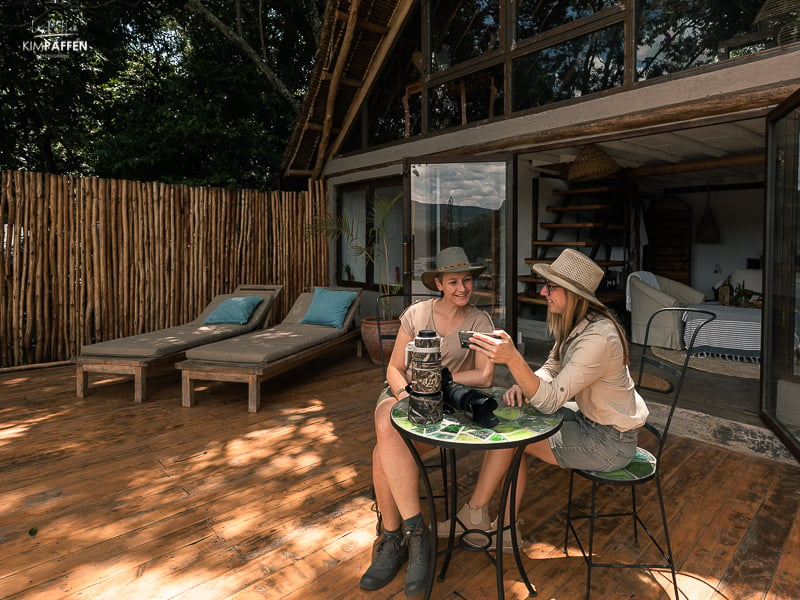
For women, it can be tough to find a stylish women's safari outfit as most affordable safari clothing is designed with men in mind (sold as unisex). The best safari clothing for women is also very subjective, but I love to wear for example the "Tayla Jane Range" of RuggedWear, designed by and for women. RuggedWear is among the most popular safari clothing brands, especially in South Africa. Another brand I love is Fjällräven. This is not a safari clothing brand and doesn't fall under the category cheap safari outfits, but a great outdoor clothing brand with sustainability in mind.
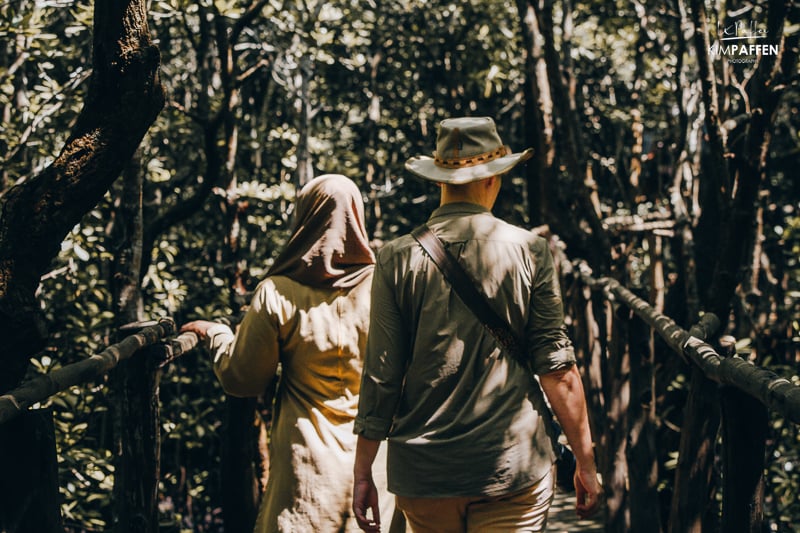
One of my favorite safari essentials is a lightweight green jacket made of thermal and water-repellant material. It's from the luxury Italian clothing brand Colmar. The side pockets and a practical adjustment drawstring make the jacket feminine and functional for safari.
Closing Thoughts: The Best Safari Outfit to Wear on Safari

Safaris are extraordinary adventures, and your attire plays a significant role in ensuring a memorable and enjoyable experience. By selecting the right clothing and accessories, you can fully immerse yourself in the safari experience. Crafting the perfect safari outfit is all about finding the right balance between comfort, functionality, and respect for the environment and local culture. Choose safari clothing with moisture-wicking properties, and lightweight earth-toned fabrics for practicality and blending in with nature on the various safari activities.
Safari Packing List
Curious about what other things to pack for safari in Africa? I crafted a complete safari packing guide about what to pack for safari in Africa or have a look at the safari packing list below.
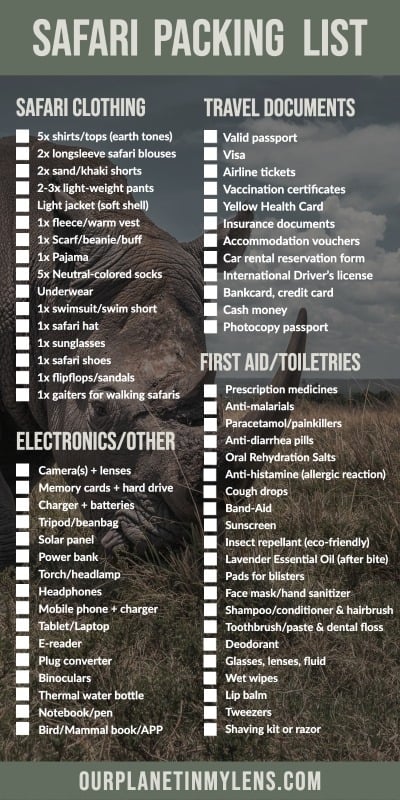
In conclusion, by following these safari clothing tips and considering your destination's specific climate and activities, you'll not only be ready to embrace the wild wonders of Africa but also ensure a more comfortable and culturally sensitive journey. So, pack wisely, explore passionately, and make the most of your safari in style, wearing a safari outfit that is comfortable and fashionable. Please feel free to leave a comment if you have questions or tips about what to wear on safari.
"Safari Njema!" (Save travels in Swahili).

